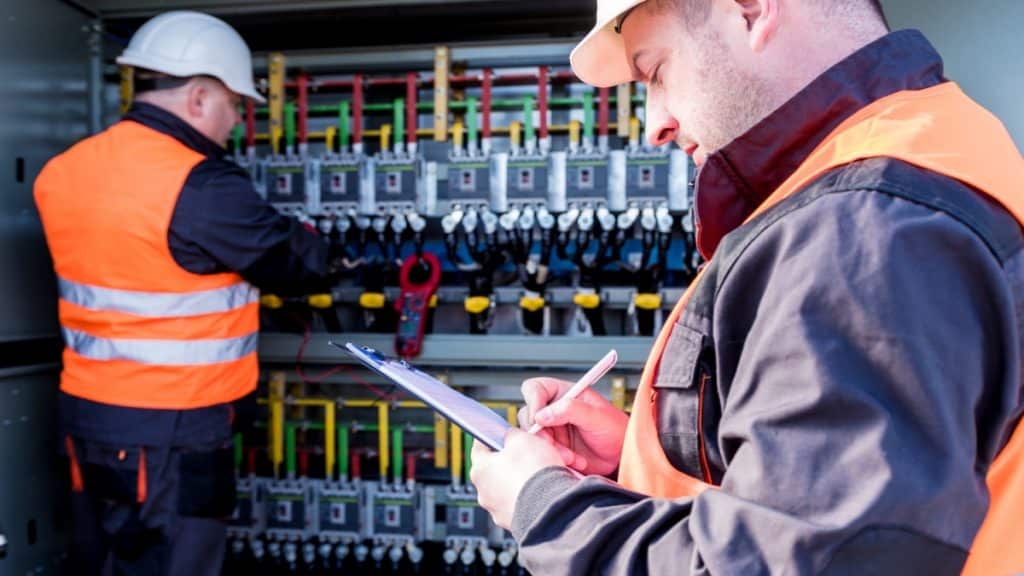The electrical power system that is life wire of the contemporary world whereby the everyday activities of homes, business enterprises, industries, and crucial facilities depend on it. As people’s demand for power increases, it becomes essential to guarantee the proper support of the electricity supply system. This paper looks at the parts of electrical power systems, issues affecting them and measures that can be taken to improve their performance.
Electrical Power systems and its components
Electrical power systems are complex networks that include several key components working together to generate, transmit, and distribute electricity:
Generation: It starts with the generation of power whereby electricity is generated from power stations using various sources like the fossil fuels, nuclear energy, hydro energy etc, wind and solar power. These energy sources are then sorted to power plants and converted to electrical energy.
Transmission: When electricity is produced it is sent through long distances through high voltage transmission lines. Transmission system, relates power plants to sub stations where voltage levels are stepped down to distribution levels.
Distribution: Distribution system transmits electricity to consumers, for instance; households, commercial places, and factories. It consists of low-tension wires and sub-stations for supplying electricity that is fore distribution at a standard voltage.
Control and Monitoring: Power systems contain control centers and the related monitoring devices in order to guarantee the stability and efficient delivery of electricity. These systems assist operators in the management of supplies and demands, identification of faults, as well as organizing a repair plan.
Challenges Facing Electrical Power Systems
Electrical power systems face several challenges that can impact their reliability and efficiency:
Aging Infrastructure: A large number of power systems continue to be energized by structures which have depreciated thus experiencing higher frequencies of breakdowns and requiring frequent maintenance. These systems are thus very important and should be updated and made more modern so as to ensure they deliver their required reliability.
Demand Fluctuations: There is large fluctuation of electricity demand at a given day and seasons of the year, or in other words, demand is not constant. This is important to achieve an even supply, so that there are not more blackouts and thus guarantee the availability of the energy needed at any time.
Integration of Renewable Energy: Expansion of renewable energy and especially wind and solar power increases variability and intermittency of power systems. Blending these sources whilst at the same time ensuring grid stability is something that entails great consideration.
Cybersecurity Threats: In the modern world, power systems incorporate digital technologies; thus, they are at risk of being hacked. Reliability and protecting such structures from the above threats is a priority.
Environmental Concerns: Power systems are needed to provide consistent energy but must also provide energy in a way that reduces greenhouse gases and has the least possible harm to the environment.
Strategies for Enhancing Electrical Power System Support
To address these challenges and ensure reliable and efficient power system support, various strategies and technologies are employed:
Grid Modernization: Introducing smart grid infrastructure results in increased hardness of the power grid infrastructure and its operations. They facilitate the inclusion and control of renewable energy production as well as technological interaction and data flow in real-time.
Energy Storage Solutions: Other measures using batteries, pumped hydro storage among others assist in managing fluctuating demands thus balancing the grid. These solutions contain additional power during times when it is not required.
Demand Response Programs: Demand response logic motivates customers to decrease the energy consumption during critical periods as a way of decreasing stress on the supply. These encouraging and variable simplified solutions motivate people.
Distributed Generation: Technologically most suited to decentralized generation like roof top solar power and small wind power, distributed generation minimizes control of energy by large establishments and optimizes energy security.
Enhanced Cybersecurity Measures: Employing measures to enhance the cyber security measures and the integration of a better threat identification system safeguard the power system against cyber threats and secure energy structures.
Energy Efficiency Improvements: Measures aimed at decreasing energy consumption inside all the sectors lower the demand and, thus, lessen the effects of power production on the environment. Obviously, recommendations toward using energy-efficient appliances and structures as well as efficient industrial processes are in line with this goal.
Regulatory and Policy Support: Economies and authorities also have certain roles in providing reliability of the power system through encouraging by legal means investment in facilities, research, and development.
Substantial electrical power system support is required for ensuring reliability and resourceful in the energy delivery structure of progressively developing new world. If implemented properly these problems of aging infrastructure, flucuating demand, cyber threats, inclusion of smart grids, microgrids and energy storage can be addressed and power systems can embark on new journey to meet the demands of modern societies. To this end, there will be need for involvement of government, utilities and the citizenry in the efforts to attain sustainable and resilient energy systems and structures.

